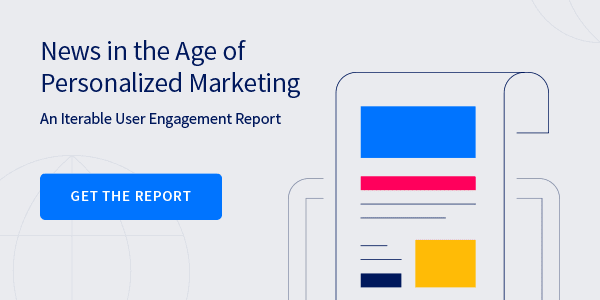In the last few decades, the possibilities for accessing news stories have exponentially grown. From the days of newspapers and magazines to radio and broadcast television, we are now in an age where access to stories from all over the globe are available at our fingertips, and in mere moments.
This drastic change in consumption has predictably altered the way publications and news seekers interact. In particular, high-quality coverage of a specific topic is often the top reason a reader will pay to become a premium subscriber.
And for the publisher, as ad spending narrows its focus, building sustainable revenue streams is of the utmost priority. Subscriptions and paid memberships seem to be the clearest path forward with 52% of editors believing these to be the main revenue drivers in the coming years.
But how do publications incentivize the purchase of a premium membership? A majority of editors (73%) see personalization as the critical path forward.
We set out to understand how publications are currently using personalization to enhance the reader experience. Today we announced the first research study of its kind, debuting our latest Iterable User Engagement Report: News in the Age of Personalized Marketing.
Our Research Methodology
In our study, we selected 30 leading publications and analyzed nearly 1,700 messages sent over a three-week period in June 2019.
We studied how these publications engage with customers across multiple channels—email, mobile push, and web push (also known as browser push)—to experience firsthand the customer journey for an avid news consumer.
To gain a holistic view of the news and media industry, we grouped the publications into six categories: U.S. Newspapers, Broadcast News, International News, Online News, Business, and Technology.
After creating accounts with each of the 30 publications, we tracked all messages for the three-week period—analyzing their personalization, design, function, frequency, cadence and more. Throughout our research, we staggered user activities to trigger behavior-based communications.
Here’s how we broke out our activities:
- Day 0: Create account; complete user profile; subscribe to 3 distinct newsletters: one daily, one weekly and one topical
- Day 3: Download and launch mobile apps; opt-in to mobile push notifications; set preferences; share location
- Day 7: Adjust in-app preferences selecting new categories to follow
- Day 10: Opt-in to web push notifications
- Day 14: Fill out premium subscription information; abandon before purchase
- Day 18: Opt-out of mobile push notifications
- Day 20: End research
While each publication added its own brand voice and style to their messaging, we did notice many commonalities across brands and categories.
In our full report, you will find the latest industry trends in publisher messaging, as well as our recommendations about how these communications can improve moving forward.
The report provides detailed examples pulled directly from our research, but for a quick glimpse, here are a few takeaways.
Key Findings: News in the Age of Personalized Marketing
- News on the Go: Mobile optimization dominated our research. Mobile push notifications surpassed email as the primary channel of choice, accounting for 50.8% of all messages. Many publications also optimized the design of their newsletters for mobile viewing. However, while preference centers and personalization were present, they were used sparingly, with a majority of publications not personalizing by topic.
- Lifecycle Marketing Is Lacking: Lifecycle marketing is not necessarily a term associated with journalism, but that doesn’t mean subscribers have to be treated any differently than customers in other industries. Welcome and promotional campaigns can be used to introduce subscribers to the breadth of a brand’s offerings and benefits. And yet, these campaigns were scarcely used by publications. Only 30% sent a welcome campaign and 37% sent a promotional message.
- The Drive for Revenue: Premium memberships are widely believed to be the sustainable future of journalism. With such a reliance on the subscription-based revenue stream, publications must take advantage of every opportunity to acquire new subscribers. The cart abandonment campaign is one of the best ways to reactivate a potential subscriber’s interest, yet only 13% of publications sent a cart abandonment message in response to our behavior.
Download the full report to gain access to more insights for better lifecycle marketing, newsletter curation and cross-channel personalization.
Looking for a deeper dive into the marketing programs of these leading publications? Check out our User Engagement Teardowns covering U.S. Newspapers and Broadcast News.
And to learn more about how Iterable can enable your business to create personalized lifecycle marketing campaigns, schedule a demo today!






























